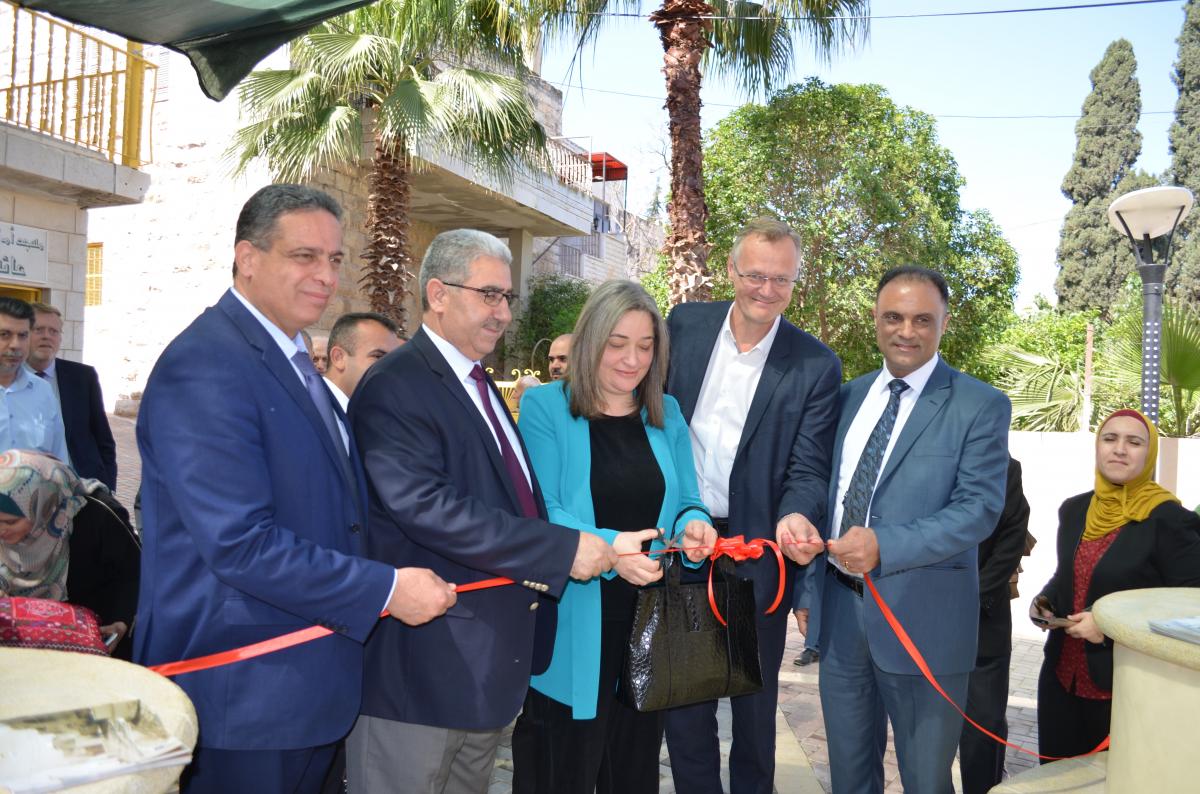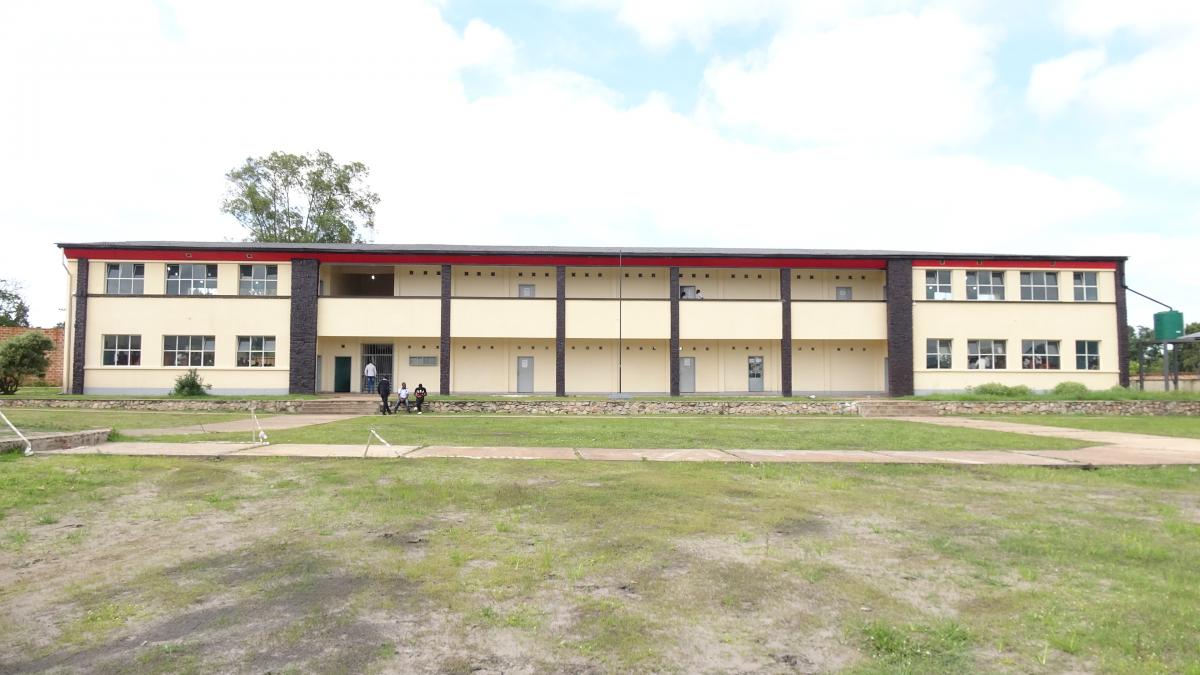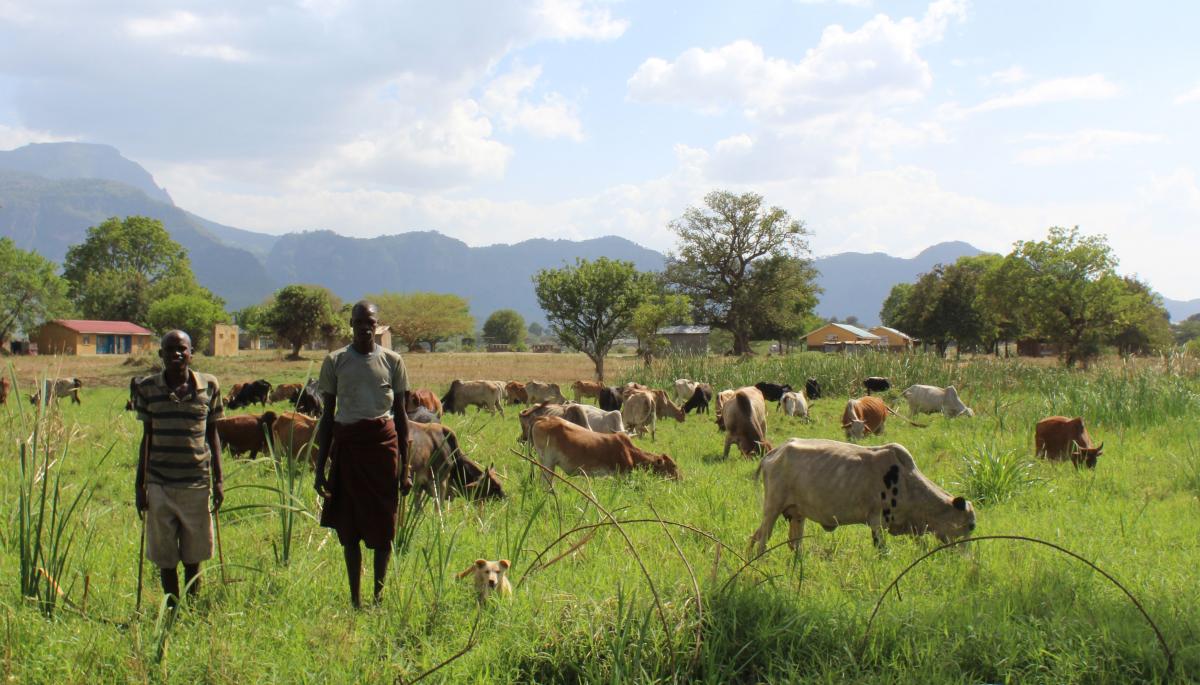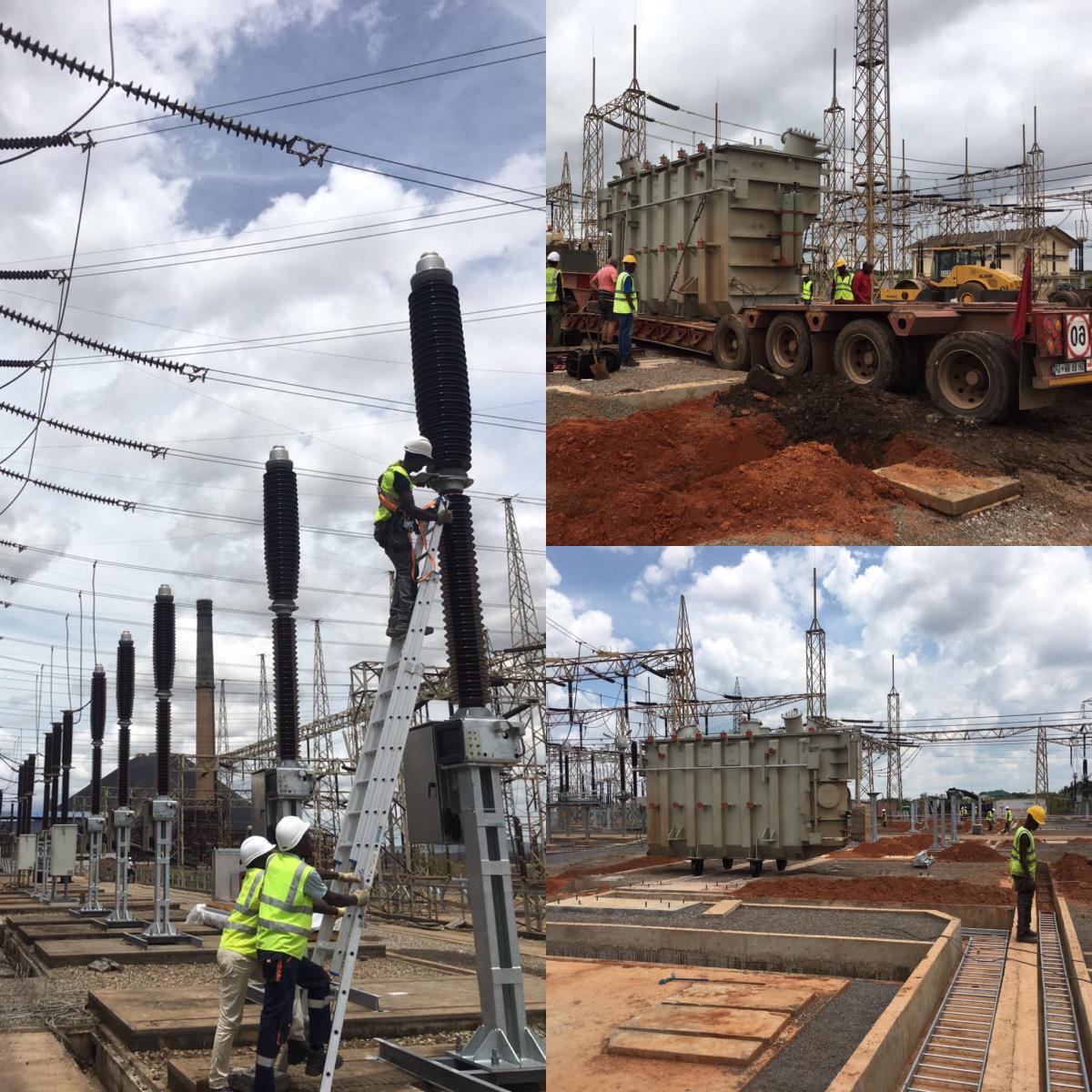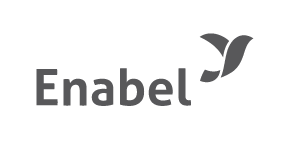Opzoeken
2235 - 2250 van 2520 nieuws bekijken
-
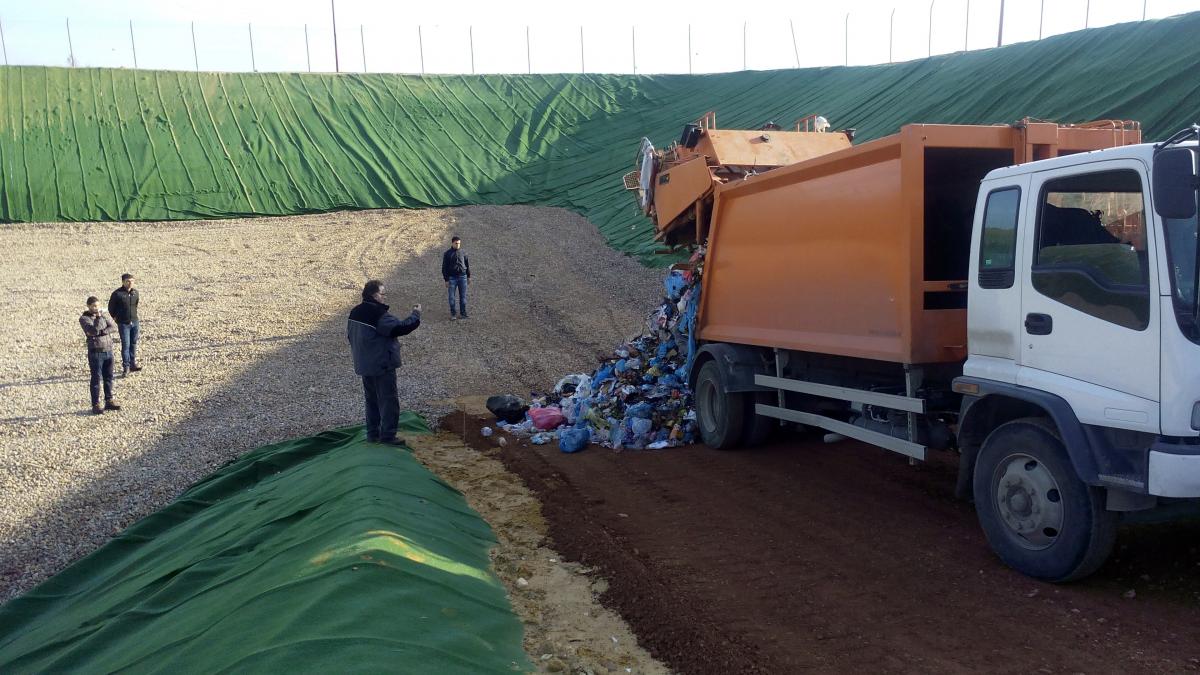
AGID : Appui à l’exploitation des centres d'enfouissement techniques dans les Wilayas de Mascara, Mostaganem et Sidi Bel Abbes
Halima HORRI | 23/04/2017
Dans le cadre de l’intervention du projet AGID en matière d’appui à l’exploitation des centres d’enfouissement technique (CET), deux missions d’expertise ont été effectuées par Mario Menegotto (Expert d’Almadius) au niveau des CET des Wilayas de Mascara, Mostaganem et Sidi Bel Abbes. Ces deux missions ont été conclues par une Journée d’étude au niveau de la Wilaya de Chlef. Première mission: Du 15 au 23 novembre 2016, l’expert a assisté les techniciens des CET et de la Direction de l’Environnement au niveau de Mostaganem pour entrer dans les nouveaux casiers du site d’Ain Sidi Cherif à Mostaganem. Dans un premier temps, l’expert a donné une formation théorique portant sur les thèmes suivant : -Comment et pourquoi préserver les membranes--Comment entrer dans le casier : procédure préalable et matériaux à utiliser (terre, pneus, graviers…) -Comment gérer le lixiviat ? -Connaissances générales et expériences algériennes-Manuel d’exploitation et de maintenance. À Mascara, le CET d’El Keurt avait déjà fait l’objet d’une mission d’expertise au mois de janvier 2016. Lors de la mission de novembre 2016, il a fallu actualiser le bilan hydrique du CET et faire le point par rapport au suivi de la composition chimique de lixiviat, ce qui a été un bon exercice pour les techniciens du CET. Deuxième mission: Du 6 au 10 décembre 2016, une formation théorique relative à la conception et l’exploitation des CET a été organisé à Oran pour les 5 cadres de l’AND et une quinzaine de cadres des DEW et des EPIC CET des trois wilayas de la zone du projet et d’autres wilayas limitrophes. Le but de cette formation était de donner aux participants les connaissances et la méthodologie adéquate pour poser un diagnostic sur l’état et le fonctionnement de l’infrastructure, selon une grille d’évaluation standardisée. Cette formation avait également pour objectif de répondre à des questions simples sur le fonctionnement de l’infrastructure et sur l’atténuation des impacts environnementaux notamment le lixiviat. Les thèmes de cette formation étaient les suivants:-Le choix d’un site de CET et son concept.-L’étanchéité passive et active. -Le bilan hydrique. -Les systèmes de drainage de lixiviat. -La gestion des biogaz. Une autre formation pratique de la cellule d’exploitation des CET de l’AND a été organisée afin que les ingénieurs de l’AND puissent prendre le relais et donner l’assistance nécessaire aux acteurs locaux en matière d’exploitation de CET. En fin de mission, l’équipe AGID a participé à une journée d’étude le jeudi 15 décembre 2016 à Chlef, initiée par la Direction de l’Environnement de la Wilaya, sous le thème « Récupération et recyclage professions d’avenir ». Mario Menegotto y a présenté au nom du projet AGID une contribution sur les bonnes pratiques en matière de conception, de construction et d’exploitation de CET.
-
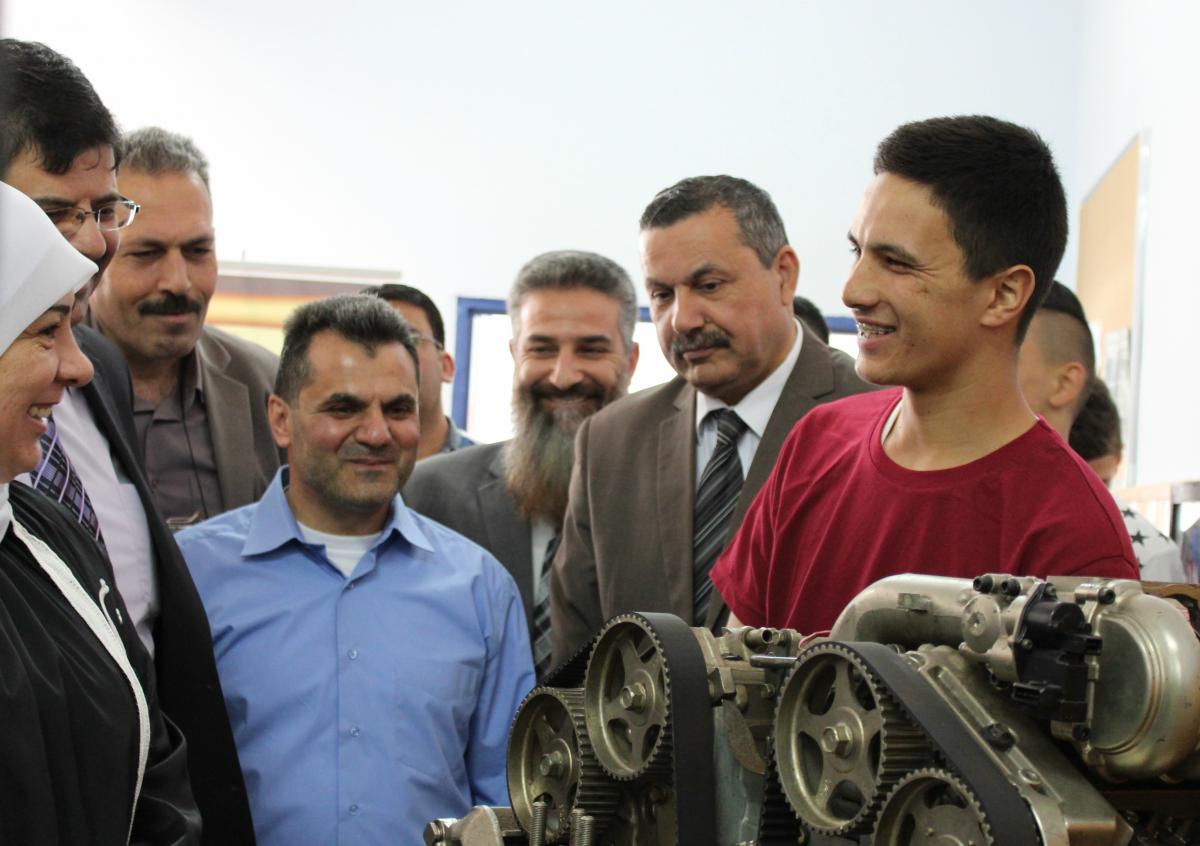
Open Days and Graduation Deir Debwan
Laura SCHILLEMANS | 21/04/2017
On the 18th of April the Open Days and Graduation Ceremony took place at the Deir Debwan Secondary Industrial School in Ramallah where ECIB supports the Work-Based Learning scheme in the Auto Mechanics vocation. The event was attended by Jehad Draidi (the director general responsible for TVET at the Ministry of Education and Higher Education in Palestine) as well as Dr. Laila Ghannam (the Governor of the Ramallah Governorate), Jamal Jawabreh (Director General of the Palestinian Federation of Chambers of Commercial, Industrial and Agriculture), Mansour Mansour (the Mayor of Deir Debwan city) and Naser Ghanim (Project Coordinator ECIB/ BTC). In the pictures you may also see Abdallah Al-Shella, the director of Deir Debwan Secondary Industrial School. During the Open Day, the students made an exhibition and explained the different equipment and tools they used during their training. Afterwards, the students celebrated their graduation during the graduation ceremony.
-
The first RHC rehabilitation projects are finalized
Laura SCHILLEMANS | 21/04/2017
‘Abud, also known as “the city of flowers”, is a Palestinian village located 22 km northwest of Ramallah. The town is very proud of its multi-religious population; Muslims and Christians. You can find several churches, monasteries, tombs and mosques in ‘Abud, all of high archaeological interest. Because of its interesting history and historic center, ‘Abud was selected to be part of the RHC program. After developing the regeneration strategy together with the community, ‘Abud was chosen as a “Quick Fruit Project”; to be a project with a big impact for its rather low or limited efforts and resources needed. Yesterday, after 2 months of hard work, the 2 rehabilitation projects in ‘Abud; the main plaza and the path to the Barbara historic site, were officially inaugurated. After clipping the ribbon, speeches were given, a dabke dance was performed and a poem about ‘Abud was recited. General Director MDLF, Dr. Tawfiq Budeiri: “The importance is not the project itself, but the program. The RHC program has changed the idea of preservation, rehabilitation and regeneration in Palestine. […] Another important aspect of this program is that the Ministry of Local Government, the Ministry of Tourism & Antiquities, MDLF, BTC and the local village council are jointly working together. […] All partners put a lot of efforts in this project and that’s not just because it’s our job, but also out of love for the history and heritage of Palestine.” The main plaza; Samra Square (560 m²), located in front of the mosque, was historically used by both Muslims and Christians for their religious and familial celebrations. Unfortunately the plaza and its adjacent buildings decayed, leaving the place a desolate impression. Now, after the rehabilitation, the plaza is back to being bright and shiny, welcoming, and safe. From now on the plaza can again fulfill its role as a stage for social encounter, gatherings and festivities. On the hill opposite of ‘Abud village, only 1 km from the main plaza, one can find the remnants of an ancient monastery named after Saint Barbara (Borbara). From the site you can enjoy a beautiful panoramic view towards the historic town of ‘Abud and its surrounding greenery. The RHC program rehabilitated the road (600m), connecting the archaeological site with the city center, to make the site more and easier accessible and provided the benches. From now on, the historic site can fully serve as a tourist attraction and picnic area. In a second step, promotional material and awareness campaign will be developed side by side with the Village Council. In addition, the Ministry of Tourism and Antiquities (MoTA) is developing hiking trails, one of which will also pass by ‘Abud, in order for tourists to discover the beautiful scenery and landscapes of Palestine.
-

Manière de communiquer, Médie raconte.
Julie CLAASSENS | 18/04/2017
Le film que vous allez regarder présente Médie Kabansa, chargée de communication au Réseau d’Education Civique au Congo (RECIC), qui a suivi une formation au Programme de Renforcement des Capacités organisationnelles par l’Octroi des Bourses (PRECOB). Au cours de cette formation, Médie a appris comment élaborer et mettre en œuvre une stratégie de communication. Une formation au PRECOB fonctionne d’une manière programmée. Au départ il y a un diagnostic institutionnel et une analyse organisationnelle, suivis d’un plan d’apprentissage et du développement des compétences. Les thèmes de formation sont tirés de ce plan, qui décrit entre autres les objectifs, les cibles, les modalités de mise en œuvre et la durée. Ensuite, chaque thème est réalisé comme un parcours d’acquisition des compétences (PAC), c’est-à-dire un processus d’apprentissage continu, axé sur trois segments liés:Le programme de départ, généralement en salle de formation et dont la durée ne dépasse pas dix jours ; L’accompagnement des apprenants à leur lieu de travail sous forme de coaching ou tutorat, qui sert à réutiliser le contenu de la formation en situation professionnelle, afin d’en démultiplier les effets ;La restitution, c’est-à-dire un moment d’évaluation globale par les apprenants, le formateur et le PRECOB. Cette restitution se déroule en une journée ou une demi-journée selon le nombre des participants.Initialement, ce processus se réalisait en six mois et par la suite sa durée a été ramenée de trois à quatre mois.
-
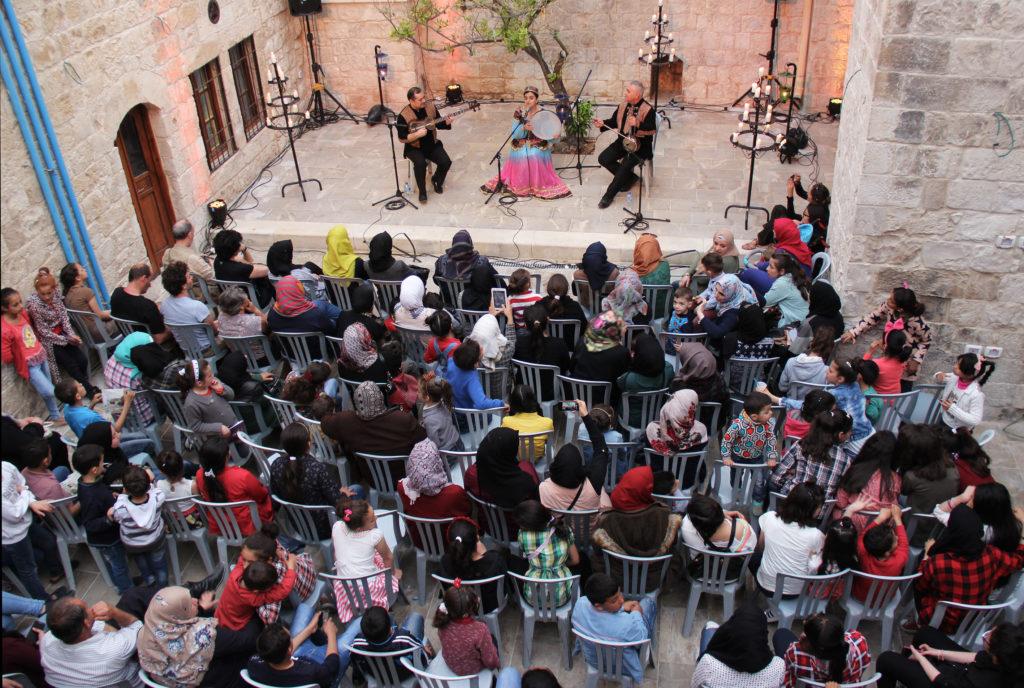
Al Kamandjâti Festival; transforming charming but quiet historic villages into bustling stages for world music.
Laura SCHILLEMANS | 18/04/2017
The RHC program tries to bring life back to those historic centres by supporting the local communities to develop a regeneration strategy, rehabilitating historic buildings or compounds and supporting operators in setting up new social, cultural or economic functions. But reviving, revitalizing, regenerating the historic centres needs more than stones and mortar. Together with all stakeholders, the program aims to change the sometimes negative perception with regards to ancient structures and to show the people the possibilities to adapt historic buildings – with respect for the historic values and the local identity – to the needs and requirements of today and tomorrow. Here for a lot of emphasis is put on advocacy, awareness raising, participation, and community activation. In that way, supporting the Al Kamandjâti Festival was the ideal opportunity to reach out to the local communities, local visitors and international tourists. Far from being a simple entertainment, Al Kamandjâti Festival seeks an art of living together by highlighting the cultural diversity and traditional heritage. This event was the occasion for an insight in both Palestine’s contemporary issues and incredibly rich legacy as this edition was travelling from the North to the South of Palestine for almost a month, passing by cities, villages and refugee camps. On Thursday 5th of April the Festival was kicked off by a press conference, photo exhibition and concert. Later on the Festival had stopovers in, amongst others, Sabastiya (April 7-8), Arraba (April 11), and Adh Dahariya (April 14). Concerts, children shows, film screenings, workshops, lectures, exhibitions and alternative guide tours took place in the different locations. The historic centres were transformed from being charming but quiet into bustling stages where hundreds of small and big events happened. BTC was also present during the Festival to communicate about the RHC program and to reach out to the local communities, local visitors and international tourists. With posters and a small brochure a first glimpse of the project was given and through screening testimonies the history of the different villages was told. The brochure (in English and Arabic) can be found here: http://ow.ly/Lv8Y30aWk1n For more information about the Al Kamandjâti Festival, please visit: http://alkamandjati.org/festivalblog/
-
Entre-temps à Kolwezi... l’Institut Technique Industrielle de Manika a été réhabilité!
Julie CLAASSENS | 14/04/2017
Dans le cadre de la coopération au développement entre la RDC et la Belgique, la CTB s’est investie dans le domaine de la formation technique et professionnelle pour rendre les lauréats facilement employables à l’issue de leurs études secondaires. Ce programme comporte plusieurs projets, notamment l’appui aux écoles techniques et professionnelles afin d’améliorer leur qualité d’enseignements. C’est le cas de l’Institut Technique Industrielle de Manika, où le diagnostic posé en 2015 a fait état d’une situation alarmante. A chaque tombée de pluie, l’école était submergée d’eau, certaines salles de classes étaient inondées et les élèves étaient en danger permanent suite au manque d’un système de drainage. De ce fait, l'immeuble de l’école s’affaissait progressivement aux risques et périls des usagers. Les élèves n’étaient pas non plus à l’abri d’intempéries diverses dans des salles de classes non vitrées et sans plafonds. La question de desserte en eau se posait avec acuité que les installations sanitaires devenues d’ailleurs obsolètes étaient paralysées, ce qui exposait les usagers à certaines maladies. Les installations électriques devenues vétustes, n’assuraient plus l’éclairage des salles dans une école technique ne disposant même pas d’une salle d’informatique. On constatait un déficit de salles de classes alors que certains locaux étaient gérés en dessous de leur potentiel. Au final, on pouvait lire de cette situation des images teintées des couleurs chaotiques.Face à cette situation précaire, une intervention transversale était donc indispensable. C’est dans ce contexte précis que EDUKAT a inscrit son intervention qui consistait en plusieurs activités, prenant en compte les divers domaines. Chaque bâtiment a été doté d’un système de drainage d’eau de pluie et différents collecteurs se rencontrent à un point pour l’évacuation d’eaux vers les collecteurs publics. Cela épargne l’école d’eau stagnante et les salles d’inondations subies dans le temps. Par ailleurs, cela sécurise les bâtiments qui étaient sans cesse menacés par les érosions qui envahissaient l’école à chaque tombée de pluie. La fondation du grand immeuble est ceinturée d’un mur de soutènement en béton. Le bâtiment dont la partie sud s’affaissait progressivement a connu la construction d’un profond mur tout autour devant contenir la pression du sol. Par ailleurs, l’eau à la base de cet état a été recueillie par des gouttières pour alimenter le tank.Des nouvelles latrines approvisionnées en eau sont construites par un système plus ou moins autonome. Par contre, les anciennes latrines ont été démolies, ce qui a permis la création d’autres espaces pour agrandir la cours où la pelouse a été plantée. En plus, des fus sont installés dans les toilettes en vue du stockage d’eau le cas échéant. Ainsi, en cas de coupure d’eau, l’école ne sera aucunement affectée. Les espaces sont réorganisés et tous les locaux ont été utilisés au maximum de leur potentiel. Cela a libéré des espaces qui ont servi à autres choses. Ainsi, une salle de professeurs, une salle d’informatique et d’autres salles de classe ont été aménagées. En outre, il a été fait la séparation des lieux de cours de ceux de pratiques pour permettre à l’école de remplir son rôle de centre d’application à d’autres écoles de formation techniques et professionnelle ne disposant pas d’ateliers. Ceci permet, d’un côté aux élèves de suivre le cours dans des conditions épanouissantes et aux enseignants de disposer d’un cadre harmonisé de préparation de leurs leçons. Les installations électriques et toute la plomberie ont été refaites, ce qui a permis d’éclairer toutes les salles de classes et d’assurer une fourniture en eau à toute l’école. Grace à cela, les conditions hygiéniques sont fortement améliorées. La mise en place d’une salle d’informatique permettra aux élèves de faire des applications informatiques à leur domaine (mécanique, construction, électricité) ou même de visualiser des images 3D. Toutes les fenêtres de l’école ont été vitrées, les plafonds installés et tous les murs repeints. Cela donne à tous les bâtiments de l’école une apparence homogène. Ainsi, les nouveaux et les anciens bâtiments ont été peints de même couleur à l’intérieur comme à l’extérieur. Telles sont les majeures activités qui ont été réalisées à l’institut Technique Industrielle de Manika. Elles se sont déroulées de février 2016 à février 2017. Le projet a été financé intégralement par la Belgique à hauteur de 600 000€. Selon les autorités scolaires, la réhabilitation vient de redorer l’image de cette école jadis ternie. Les conditions de travail pour les enseignants et élèves sont considérablement promues. Les autorités estiment par ailleurs qu’environ 2000 élèves bénéficieront chaque année des acquis de ce projet.
-
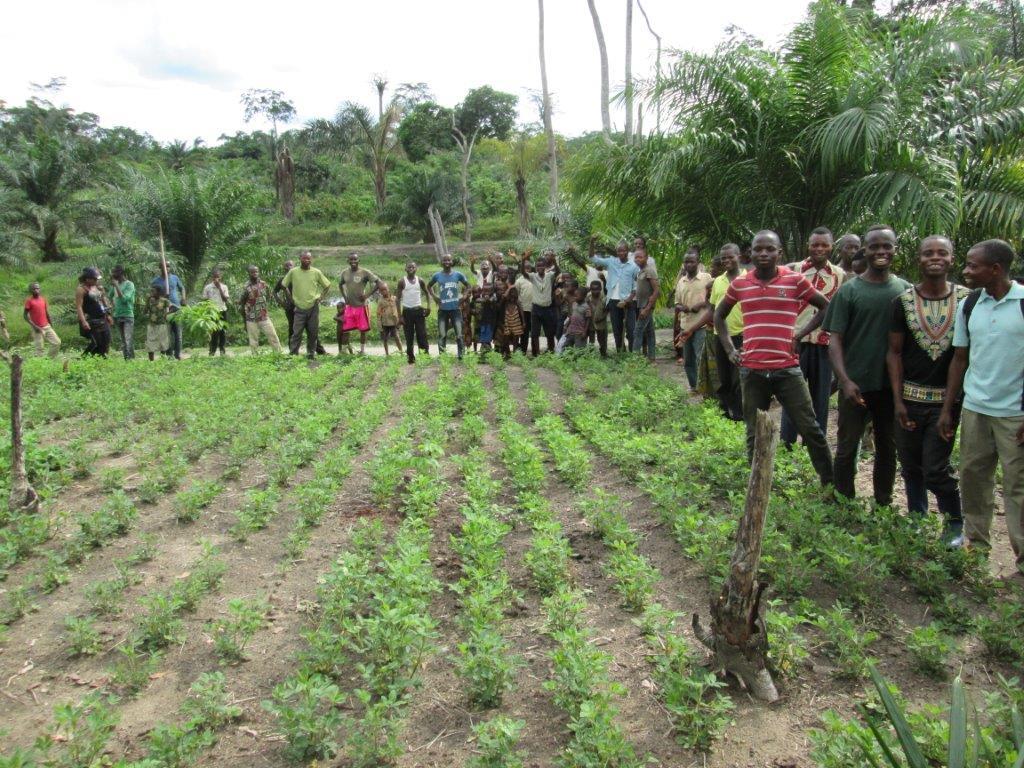
La production des sémences de qualité et le semis en ligne: deux objectifs indispensables pour l'activité agricole dans la Tshopo.
Julie CLAASSENS | 12/04/2017
Dans la Tshopo, le grand défi agricole reste de faire produire des semences de qualité (manioc, riz, maïs) auprès du paysan et à un prix accessible. C’est dans cette perspective que le PRODAT a formé et installé 475 paysans comme agri-multiplicateurs dans les bassins de production. Ces agri-multiplicateurs ont produit de la semence de qualité déclarée (avec moins de contrôle donc moins de coût) et des ventes locales ont été réalisées auprès des paysans. C’est un début de solution, mais le programme pense qu’il est important de poursuivre la sensibilisation des paysans à cette question. Les premiers résultats pourront être présentés aux autorités afin de montrer qu’un autre type de filière semencière est nécessaire et viable. Concernant les techniques de semis, elles sont faites à la volée et de façon non ordonnée par des paysans. Pour faire face à cette situation, le programme a testé le semis en ligne avec des organisations paysannes dans leur champ collectif, qui est leur classe. Le semis en ligne permet une bonne occupation de l’espace et une utilisation plus économique de semences. Par ailleurs, l’entretien du champ est plus facile et les rendements obtenus sont plus élevés. Toutefois, il demande plus de travail que le système traditionnel. Au regard des résultats obtenus dans le champ collectif, chaque paysan membre d’une organisation partenaire peut décider de reconduire le semis en ligne dans son champ familial. Le retour qui a été réalisé des travaux en 2016 fait penser qu’un nombre appréciable de paysans a été intéressé par cette nouvelle technique. C’est pourquoi, il est important d’engager des actions de sensibilisation pour toucher un plus grand nombre.
-
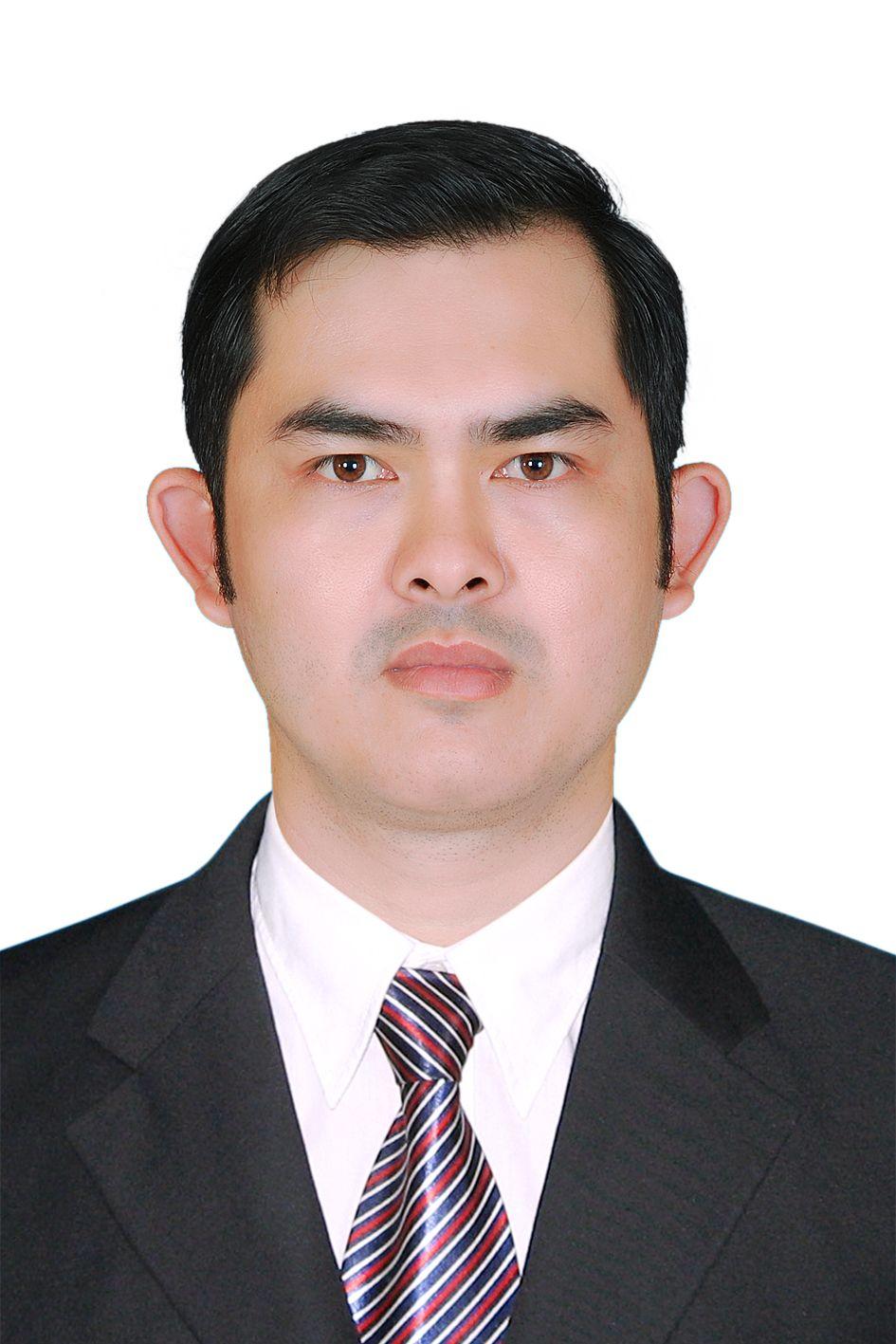
Nguyen Kien, Cuong, a Vietnamese scholarship holder explains what he does for his country
Els DEHANTSCHUTTER | 11/04/2017
Published: 10-04-2017 Managing the monitoring of dairy cattle reproduction in VietnamNguyen Kien, Cuong is a Professor at the Faculty of Animal Sciences and Veterinary Medicine at the Nong Lam Agriculture and Forestry University of Ho Chi Minh City, which falls under the Ministry of Education and Training. He worked at his PhD from 2011 to 2017 at the Université de Liège (ULG) in Belgium. The title of his thesis: “Descriptive study of risk factors of sterility and infertility in dairy cows in Vietnam”. Kien chose the topic because domestic dairy production only covers 25% of Vietnam’s needs. His objective is, on one hand, to study the dairy production characteristics of family farms in Vietnam, and on the other hand, to analyse the effects of risk factors to which they are exposed. He defended his thesis on 27 March 2017 at the ULG in view of obtaining a PhD in Veterinary Sciences. Through his PhD he expanded his knowledge on theriogenologic (reproductive veterinary medicine) aspects of dairy cows and gathered learning and research experience as he dispensed theoretical and practical courses to local veterinaries, farm technicians and dairy cattle breeders in southern Vietnam. Summary of his thesis 1- Which is your institution of origin? (Which ministry do you depend from)? The Faculty of Animal Sciences and Veterinary Medicine at the Nong Lam Agriculture and Forestry University of Ho Chi Minh City, which falls under the Ministry of Education and Training. 2- What is your job in Vietnam? I am a university professor. 3- What objective did you pursue through your PhD? - Further develop a system to monitor reproduction in family-size dairy breeding farms in Vietnam and help improve the quality of dairy stock reproduction and diary production. - Further teach stock breeding to students at my university but also at other universities in Vietnam. Disseminate the results and experiences acquired through my thesis research among students and researchers. - Further train local veterinaries, farm technicians and dairy stock breeders (stock breeding technique, managing the reproduction of herds, nutrition, improved dairy quality, reproduction pathologies, issues with metabolism…). - Look for funding to put in place research prospects indicated in my thesis, such as research into how to implement measures to improve the quality of reproduction and dairy production, into improving the quality of milk in family farms, into the effects of limping, malnutrition, thermal stress… on the quality of reproduction and dairy production, or into mastitis on family farms. 4- Why did you choose this topic for your thesis? Population growth and economic development explain the considerable growth of dairy product demand in Vietnam. Yet, domestic dairy production only covers 25% of needs. So, for Vietnam improved dairy production offers prospects and is a real challenge. It implies controlling directly and indirectly contributing factors. Such factors include genetics, food, the environment and the quality of reproduction. Identifying and controlling individual and collective factors that affect the quality of reproduction therefore constitute an important step towards improving dairy production. Our work aims, on one hand, to study the dairy production characteristics of family farms in Vietnam, and on the other hand, to analyse the effects of risk factors to which they are exposed. 5- How does Vietnam benefit from this research? First, this study has defined the dairy production and stock reproduction characteristics of family farms in Vietnam as well as the risk factors to which they are exposed. The research has also identified limitations of family farm dairy stock breeding in Vietnam. Next, the monitoring system of reproduction put in place by the study had a positive effect on the quality of reproduction among the cows observed. Finally, this research helped me go deeper into aspects of theriogenology (reproductive veterinary medicine) of the dairy cow and to gather teaching and research experience. That way, I dispensed some fifteen (theoretical and practical) training sessions to local veterinaries, farm technicians and dairy cattle breeders in southern Vietnam.
-

La digue de Ndana
Julie CLAASSENS | 07/04/2017
Les 350 mètres d’inondations de la rivière Ndana ne sont qu’un souvenir lointain pour les usagers de l’axe Bagata-Ntober-Ndana-Sia-Mabenga-Kasai (135 km). Pendant plusieures années, la traversée de cette rivière était un cauchemar pour les piétons, les cyclistes et les motocyclistes. Les camions et jeeps avaient déserté la route. Les villages, les hopitaux et les zones de santé étaient enclavés, coupés les uns des autres. Les travaux de rechargement de la digue et de construction de deux ponts et de neuf buses lancés en avril 2016, impactent déjà positivement les mouvements des passagers comme cela est témoigné dans ce petit film.Entre-temps, tous les travaux sont finis!
-
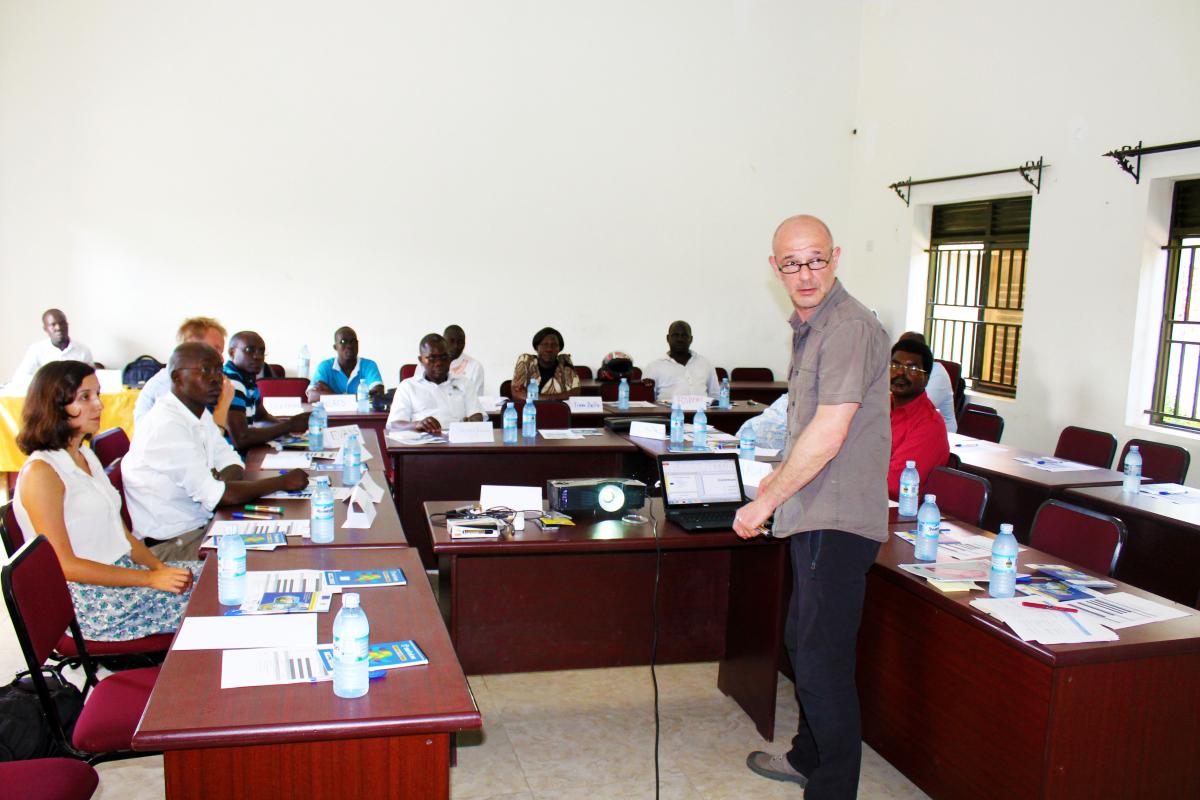
STAKEHOLDERS MAPPING FOR THE SUPPORT PROGRAMME FOR REFUGEE SETTLEMENETS IN NORTHERN UGANDA
William YEKA | 07/04/2017
The first step in the process of stakeholder engagement is stakeholder identification, determining who the project stakeholders are, and their key groupings. From this flows stakeholder analysis, a more in-depth look at stakeholder group interests and how they will be affected, and what influence they could have on an intervention. In a bid to understand its stakeholders, the Support Program for Refugee Settlements in Northern Uganda (SPRS-NU) under the European Union Emergency Trust Fund (EUTF) successfully started the process through a segmentation workshop conducted at Heritage Courts Hotel in Arua district of Northern Uganda. The EUTF SPRS-NU stakeholder segmentation will enable effective and efficient engagement with the various target audiences as part of the visibility and communications efforts.Among the participants of the workshop, were Arua Local Council (LC) 5 vice chairperson, Refugee Desk Office (RDO), Implementing partners from the Danish Refugee Council, Austrian Development Agency implementers - WDSF-Northern, ZOA, CEFORD, Save the Children and Belgium Development Agency. Genesis Acema Dria the LC 5 Vice Chairperson of Arua District lauded European Union for its support to refugee settlements and host communities in Northern Uganda. “Such an exercise to understand needs of stakeholders is commendable and we pledge our support” he noted. He recognized the involvement of local Government in the exercise and pledged the support of his team. The EUTF through SPRS–NU aims at addressing the roots of destabilization, forced displacement and irregular migration. Its objective is to sustainably improve food security, nutrition and livelihood of refugees and host communities in the refugee districts of Northern Uganda. Uganda is home to over 823,528 South Sudan refugees and over 1,139,374 refugees and asylum seekers in total (UNHCR statistics April 2017). The South Sudan Refugee crisis is currently the biggest on the African Continent. The EUTF SPRS-NU is implemented by Austrian Development Agency, Belgian Development Agency and NGO consortium led by Danish Refugee Agency.
-
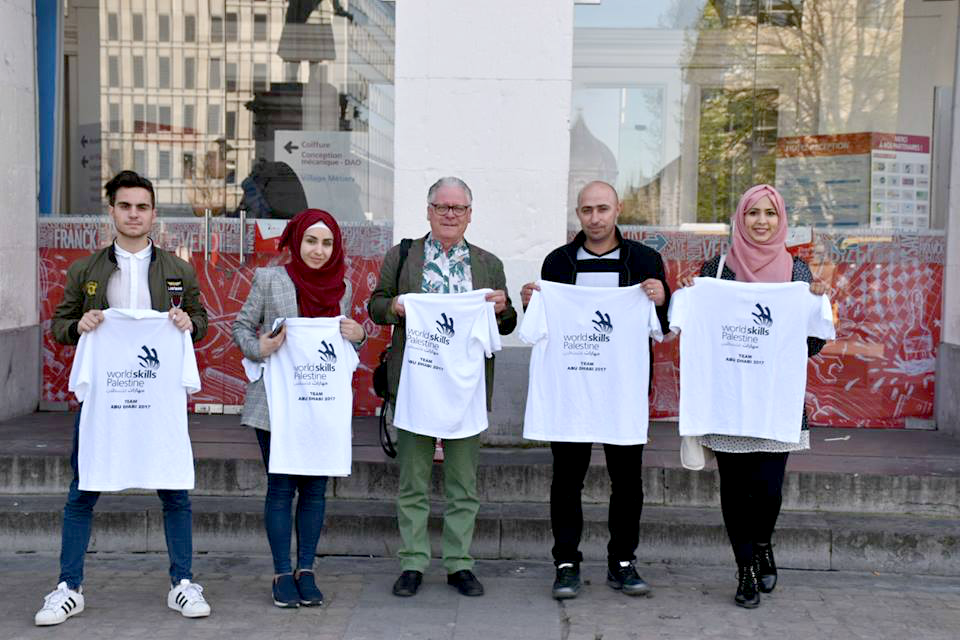
Palestine Skills in Belgium: 2 Weeks of Unforgettable Experiences
Laure MOSTINCKX | 04/04/2017
In picture: The Palestinian WorldSkills delegation at the Startech’s Award Ceremony in Liège, Belgium.Last week, the Palestinian WorldSkills delegation completed its training in Belgium. Two young Palestinian graphic designers Sobheya Abumusallam and Ibraheem Qawasma had been selected during the first national Palestine Skills competition in Ramallah to compete in the official WorldSkills competition in Abu Dhabi in 2017.WorldSkills is the largest vocational skills competition in the world with young talents from over 70 member countries and regions coming together to compete in around 50 skill competitions, such as graphic design, cooking, carpentry, electronics, metal work, hairdressing and many more. For the Palestinian youth it is the first time they have the occasion to participate. In order to prepare for this competition, Sobheya and Ibraheem, supported by the Belgian Development Agency (BTC), received an intensive training in Belgium over the course of 2 weeks in March 2017. Moreover, during this time they were able to compete in Belgium’s Startech’s Days, the Belgian national World Skills competition.During their visit to Belgium, the Palestinian WorldSkills delegation enjoyed a successful trip with plenty of new discoveries, learning opportunities and unique experiences. The trip started with the 2-day Startech’s competition in Brussels where Sobheya and Ibraheem performed very well. Afterwards, they received a tailor-made training on graphic design from Thierry Herman, a Belgian expert from the Centre de competence Forem Cepegra in Charleroi, where the young graphic designers were able to discover new ways of designing.The morning of their first training, the WorldSkills delegation already prepared their first exciting visit to meet the Palestinian ambassador Mr. Abdalrahim Alfarra, who was very impressed with the achievements of the students. Nothing could have prepared them, however, for being invited by the Palestinian President Mahmoud Abbas! The Palestinian president was on a mission in Europe and staying at a hotel in Brussels at the same time that the WorldSkills Palestine delegation were preparing their training in Belgium. Through their new contact, the Palestinian ambassador in Belgium, the delegation received an invitation from Mr. Mahmoud Abbas for a short visit. “Unbelievable, we thought we are dreaming, but called and got the hotel address. We headed back to our room for redressing, entered our rental car and out we were for Brussels! After being guided by dozens of security guards we finally entered Abu Mazen’s private hotel room. How surprised we were! He asked a lot of questions about our mission, about WorldSkills and promised out any help if needed! (…) We were so happy, this is like reaching the Olympics for WorldSkills Palestine! (…)” (Michael Buechele, Palestinian World Skills delegation). After this big encounter with the president, the delegation turned back to work and visited DICO, a small graphic design company with a small team of highly creative people from whom the young graphic designers could learn a lot. While continuing their training in Charleroi, the team attended the International Marketing Week at EPHEC LLN in Louvain-La Neuve where the students had a wonderful day learning about the lifecycle of design. On their last day, the delegation was invited at the Belgian Parliament. In the afternoon, they were special guests at the Opera House in Liège, the venue for the Award Ceremony of the Startech’s Days.The visit of the Palestinian WorldSkills delegation to Belgium has given them the incredible opportunity to raise awareness for the importance of technical and vocational skill training, especially in the Palestinian Territory. Youth unemployment there is exceptionally high and vocational training has proven to be one of the most successful ways of tackling this issue. This is why the Belgian Development Agency (BTC) focuses its efforts on supporting these technical and vocational education and training initiatives. Of course, for Sobheya and Ibraheem, as well as their dedicated team of national and international experts Alaa Doudin, Shadi Ragabi and Michael Buechele, their visit to Belgium has been first and foremost an enriching and life-changing learning experience. Sometimes things are going far beyond your dreams and this is what happened to the WorldSkills Palestine Graphic Design Team. (…) Thanks once more to all who supported us: BTC, The Belgium Consulate in Jerusalem, WorldSkills Belgium, Cepegra Training Center in Charleroi, Thierry Herman our teacher, (…) thanks to the Palestinian Embassy in Brussels, thanks to Abu Mazen!” (Michael Buechele, Palestinian WorldSkills Delegation) Check out this short video on their experiences here: https://www.youtube.com/watch?v=q1JfnZTxBgw&feature=youtu.beFollow their next adventure to 2017 World Skills Abu Dhabi on the following channels:www.facebook.com/palestineskills https://www.facebook.com/BTCPalestine/ · https://www.facebook.com/WorldSkills/?fref=ts · https://worldskillsabudhabi2017.com/en/
-

La vie à Kindi
Julie CLAASSENS | 31/03/2017
Grâce à la réhabilitation de la route par notre programme prodadekk, il y a eu beaucoup de changements positifs dans le village de Kindi.
-

Le Master ECOM-ALGER, une primeur pour la RDC!
Julie CLAASSENS | 31/03/2017
La RDC est confrontée à plusieurs maladies infectieuses émergentes et réémergentes (fièvre jaune, cholera, ...) contre lesquelles les infrastructures et les ressources humaines ne sont pas encore assez outillées pour y faire face. Malgré des investissements de plus en plus importants alloués à la lutte contre les maladies infectieuses, les résultats obtenus restent mitigés. La situation reste préoccupante, comme le témoigne la recrudescence des épidémies de rougeole, le nombre croissant de décès au paludisme et de cas de tuberculose multi-résistants. Les approches classiques d'épidémologie utilisées se sont avérées très limitées pour expliquer les mécanismes d'émergence et de réémergence des maladies, leurs dynamiques spatiales et temporelles, ainsi que leurs distributions au niveau des populations. Les approches écologiques se sont montrées plus globalisantes et plus efficaces pour la compréhension de ces phénomènes morbides. Mais l'application de cette approche en RDC n'est pas encore très avancée et souffre d'un manque de financement par le pays et par la communauté internationale. Aussi, au vu du constat de la quasi absence de ce type de formation en Afrique, vu la nécessité et l'urgence d'aider les pays Africains à se préparer aux défis sanitaires et environnementaux de plus en plus complexes, multiples et survenant dans un contexte de crise financière internationale, il a été jugé nécessaire de mettre en place le Master en Ecologie et Contrôle des Maladies infectieuses et Aléas Naturels et Gestion des Risques à la Faculté de Médecine de l'Université de Kinshasa. Le résultat attendu le plus important est que chaque année, vingt cadres congolais sont formés en écologie des maladies infectieuses, en éco-épidémiologie, en gestion des risques et contrôle des aléas naturels.
-
Skilling the Karamojong
Hanna DEKERK | 31/03/2017
Karamoja, a region with many challenges and opportunitiesIn Karamoja (Northern Uganda) much of the labor is sourced outside the district as employers experience a shortage of local skilled personnel. Nevertheless, Karamoja has untapped human potential in numerous sectors. The challenges in skill development include that Business, Technical and Vocational Education and Training (BTVET) is not adapted to the demands of the local labor market, nor to the lifestyle of the local population: the Karamojong.BTC's support to Skilling Uganda project, with the support of Irish Aid, wants to raise the quality and quantity of skills development for over 2000 youths in Karamoja through short-term and flexible trainings. What makes the situation unique is that the Karamojong people have a pastoralist background. This means that they raise cattle and move their herds in search of fresh pastures and water. Due to population growth, some Karamojong lack the necessary cattle and need to learn other skills to have a source of income. Hence, the trainings will focus on traditional skills like livestock keeping (to prevent cattle diseases, improve animal nutrition, etc.) and crop production but also on innovative skills such as solar panel maintenance, mobile phone repair, solid waste treatment, etc.Making skills development relevantTo make skills development useful for Karamoja’s local labor market, these trainings will be organized in collaboration with the private sector. Local employers will advise training providers on the labor market needs and let trainees gain practical experience through internships and apprenticeships. The focus lies with Karamoja’s emerging construction market and possible economic developments in the tourism industry (for example: marketing of the unique Karamojong traditions). The goal is to establish work-based learning and to let skills development respond to the needs of Karamoja’s labor market.BTC's approachBTC's support to Skilling Uganda project will do this by launching a Skills Development Fund designed for Karamoja. It allows local training providers and private sector actors to jointly and in a flexible way, organize relevant and qualitative trainings. Secondly, the project will support two selected partner schools in the region: St-Daniel Comboni Polytechnic institute and Nakapiripirit Vocational Institute. These institutes have formulated their own business plans with goals for future sustainable development, and BTC will support them to reach these goals. The needs vary from school to school and can include teacher trainings, management support, infrastructural improvement, etc. The project will also provide a limited support to five other schools in the region.The goal of BTC's Support to Skilling Uganda project in Karamoja is to allow the Ugandan government to mainstream the reform techniques, adapted to the unique context of the region.
-
Entre-temps à Lubumbashi...
Julie CLAASSENS | 30/03/2017
Les transformateurs de 80 et 50 tonnes sont arrivés! Ce n'était pas une sinécure vu les conditions des routes en RDC. Les transformateurs sont fabriqués à Ahmedaba, en Inde (photos de droite).Sur l'image de gauche vous voyez l'installation des nouveaux disjoncteurs de 220kV. Ce sont les instruments les plus importants d'un réseau électrique. Les disjoncteurs déclenchent en cas d'erreur et protègent les cables et les installations.En plus, le bâtiment où le projet installera les nouveaux départs 15kV qui alimenteront la cité Karavia, est fini et réceptionné. Les travaux génie civil ont tous terminés et l'installation des charpentes et structures qui serviront à poser l'équipement haute-tension, à démarrée. Tout commence à prendre forme.
